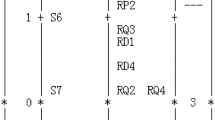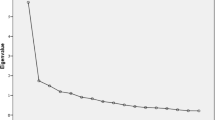Abstract
Recent applications of quality assurance (QA) standards have required academic programmes in Saudi universities to base teaching on a variety of learning outcomes along with relevant teaching and assessment methods that are subject to regular reviews both internally and externally. In line with these educational developments, the present study attempted to find out if the repeated check-ups of what to assess in the students’ writing have helped to standardize the assessment criteria for EFL writing courses at Majma’ah University (MU). A questionnaire and follow-up interviews were used to collect data to answer four research questions pertaining to the use of marking rubrics and whether or not their use is affected by three variables: Instructional experience of the faculty, academic levels at which writing courses are offered and the type of writing being assessed. The study findings indicated that participants used the ten marking rubrics included in the questionnaire. They also showed no statistically significant differences in the use of marking rubrics based on the study variables.
Access this chapter
Tax calculation will be finalised at checkout
Purchases are for personal use only
Similar content being viewed by others
References
Abdalla, A. Y. (2007). The significance of incorporating language skills into EFL syllabus. Khartoum University Journal of ADAB, 25, 17–29.
Al-Harthi, K. (2011). The impact of writing strategies on the written product of EFL Saudi male students at King Abdul-Aziz University. A thesis submitted in partial fulfillment of the requirements for the Degree of Doctor of Philosophy in Applied Linguistics. New Castle University, UK.
Aljafen, B. S. (2013). Writing anxiety among EFL Saudi students in science colleges and departments at a Saudi university. A thesis submitted to the School of Graduate Studies and Research in partial fulfillment of the requirements for the degree Master of Arts. Indiana University of Pennsylvania, USA.
Al-Nufaie, M., & Grenfell, M. (2012). EFL students’ writing strategies in Saudi Arabian ESP writing classes: Perspectives on learning strategies in self-access language learning. Studies in Self-Access Learning Journal, 3(4), 407–422.
Al-Shahrani, A. (2014). Investigating teachers’ written corrective feedback practices in a Saudi EFL context: How do they align with their beliefs, institutional guidelines, and students’ preferences? Australian Journal of Teacher Education, 37(2), 101–122.
Australian Curriculum, Assessment and Reporting Authority. (2012). Persuasive writing marking guide. Sydney: ACARA.
Azevedo, M. M. (2009). Literary linguistics in the context of a literature department. In J. Collentine, M. Garcia, B. Lafford, & F. M. Marín (Eds.), Selected proceedings of the 11th Hispanic linguistics symposium (pp. 1–8). Somerville: Cascadilla Proceedings Project.
Bazerman, C., Little, J., Bethel, L., Chavkin, T., Fouquette, D., & Garufis, J. (2005). Reference guide to writing across the curriculum. West Lafayette, Indiana: Parlor Press and the WAC Clearinghouse.
Becker, A. (2011). Examining rubrics used to measure writing performance in U.S. intensive English programs. The CATESOL Journal, 22(1), 113–130.
Brenland, H. M. (1983). The direct assessment of writing skills: A measurement review. College Board Report No. 83-6. New York: College Entrance Examination Board.
Connor, U. (1996). Contrastive rhetoric: Cross-cultural aspects of second language writing. Cambridge: Cambridge University Press.
Ezza, E. Y. (2013). Intervention strategies in a Saudi EFL classroom. Journal of Arts and Humanities, 2(2), 17–24.
Graham, S., Harris, K. & Hebert, M. (2011). The benefits of formative assessment: A report from Carnegie corporation. New York: Alliance for Excellent Education.
Grami, G. M. A. (2010). The effects of integrating peer feedback into university-level ESL writing curriculum: A comparative study in a Saudi context. Unpublished doctoral dissertation, Newcastle University. Accessed March 15, 2015 from http://www.kau.edu.sa/files/0005407/researches/57369_27610.pdf
Huot, B. (1996). Toward a new theory of writing assessment. College Composition and Communication, 47(4), 549–566.
Jahen, J. H. (2012). The effect of peer reviewing on writing apprehension and essay writing ability of prospective EFL teachers. Australian Journal of Teacher Education, 37(4), 60–84.
Jahen, J. H., & Idrees, M. W. (2013). EFL major student teachers’ writing proficiency and attitudes towards learning English. Umm Al-Qura University Journal of Educational and Psychological Sciences, 4(1), 10–72.
McIntyre, M. (2012). Linguistics and literature: Stylistics as a tool for the literary critic. SRC Working Papers, 1, 1–11.
Weigle, S. C. (2007). Teaching writing teachers about assessment. Journal of Second Language Writing, 16, 194–209.
Wilkinson, A. (1983). Assessing language development: The Crediton project. In A. Freedman, I. Pringle, & J. Yalden (Eds.), Learning to write: First language/second language (pp. 67–86). New York: Longman.
Author information
Authors and Affiliations
Corresponding author
Editor information
Editors and Affiliations
Appendices
Appendix 1
-
Dear EFL/TESOL Faculty at Majma’ah University;
The following questionnaire is intended to collect data to answer a number of research questions regarding the use of marking criteria in assessing students’ writing at Majma’ah University. You are kindly requested to spare some of your valuable time to answer it.
-
Regards;
-
El-Sadig Yahya Ezza
-
Associate Professor, Community College
Criteria for Assessing EFL Writing at Majma’ah University
Questionnaire
-
A.
Demographic Information
-
1.
Academic Status:
-
i.
Professor: [ ]
-
ii.
Associate Professor: [ ]
-
iii.
Assistant Professor: [ ]
-
iv.
Lecturer: [ ]
-
v.
Teaching Assistant: [ ]
-
i.
-
2.
Type of Writing Assessed:
-
i.
Essays and paragraphs in writing courses: [ ]
-
ii.
Essays and paragraphs in linguistics and literature: [ ]
-
i.
-
3.
Levels at which courses are offered:
-
i.
Early levels (1–2): [ ]
-
ii.
Intermediate levels (3–6): [ ]
-
iii.
Advanced Levels (7–8): [ ]
-
i.
-
1.
-
B.
Tick the frequency of marking criteria you use in assessing students’ writing; where:
5 = always, 4 = often, 3 = sometimes, 2 = rarely, 1 = never
Marking criteria
Description
Frequency of use
1
Audience
The writer’s capacity to orient, engage and persuade the reader
5
4
3
2
1
2
Text structure
The organization of the structural components of a persuasive text i.e., introduction, body and conclusion
3
Ideas
The selection, relevance and elaboration of ideas for an argument
4
Persuasive devices
The use of a range of persuasive devices to enhance the writer’s position and persuade the reader
5
Vocabulary
The range and precision of contextually appropriate language choices
6
Cohesion
The control of multiple threads and relationships across the text, achieved through the use of referring words, ellipsis, text connectives, substitutions and word associations
7
Paragraphing
The segmenting of text into paragraphs that assists the reader to follow the line of argument
8
Sentence structure
The production of grammatically correct, structurally sound and meaningful sentences
9
Punctuation
The use of correct and appropriate punctuation to aid the reading of the text
10
Spelling
The accuracy of spelling and the difficulty of the words used
Appendix 2
-
Dear EFL/TESOL Faculty at Majma’ah University;
The following questionnaire is intended to collect data to answer a number of research questions regarding the use of marking criteria in assessing students’ writing at Majma’ah University. You are kindly requested to spare some of your valuable time to answer it.
-
A.
Demographic Information
-
1.
Academic Status:
-
i.
Professor: [ ]
-
ii.
Associate Professor: [ ]
-
iii.
Assistant Professor: [ ]
-
iv.
Lecturer: [ ]
-
v.
Teaching Assistant: [ ]
-
i.
-
2.
Type of Writing Assessed:
-
i.
Essays and paragraphs in writing courses: [ ]
-
ii.
Essays and paragraphs in linguistics and literature: [ ]
-
i.
-
3.
Levels at which courses are offered:
-
i.
Early levels (1–2): [ ]
-
ii.
Intermediate levels (3–6): [ ]
-
iii.
Advanced Levels (7–8): [ ]
-
i.
-
1.
-
B.
Tick the frequency of marking criteria you use in assessing students’ writing; where:
5 = always, 4 = often, 3 = sometimes, 2 = rarely, 1 = never
Criteria for Assessing EFL Writing at Majma’ah University
Marking criteria
Description
Frequency of use
1
Audience
The writer’s capacity to orient, engage and persuade the reader
5
4
3
2
1
2
Text structure
The organization of the structural components of a persuasive text i.e., introduction, body and conclusion
3
Ideas
The selection, relevance and elaboration of ideas for an argument
4
Persuasive devices
The use of a range of persuasive devices to enhance the writer’s position and persuade the reader
5
Vocabulary
The range and precision of contextually appropriate language choices
6
Cohesion
The control of multiple threads and relationships across the text, achieved through the use of referring words, ellipsis, text connectives, substitutions and word associations
7
Paragraphing
The segmenting of text into paragraphs that assists the reader to follow the line of argument
8
Sentence structure
The production of grammatically correct, structurally sound and meaningful sentences
9
Punctuation
The use of correct and appropriate punctuation to aid the reading of the text
10
Spelling
The accuracy of spelling and the difficulty of the words used
Rights and permissions
Copyright information
© 2017 Springer International Publishing Switzerland
About this chapter
Cite this chapter
Ezza, ES.Y. (2017). Criteria for Assessing EFL Writing at Majma’ah University. In: Hidri, S., Coombe, C. (eds) Evaluation in Foreign Language Education in the Middle East and North Africa. Second Language Learning and Teaching. Springer, Cham. https://doi.org/10.1007/978-3-319-43234-2_11
Download citation
DOI: https://doi.org/10.1007/978-3-319-43234-2_11
Published:
Publisher Name: Springer, Cham
Print ISBN: 978-3-319-43233-5
Online ISBN: 978-3-319-43234-2
eBook Packages: EducationEducation (R0)




